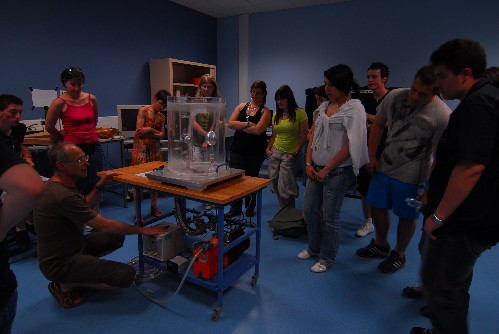
The planeterrella in action. Courtesy: Guillaume Gronoff
By Margaret Harris
Earlier this month, lucky observers in the northern reaches of Europe and North America saw an unusually big burst of aurora activity after a large coronal mass ejection from the Sun collided with the Earth’s magnetic field, sparking a geomagnetic storm on 3–5 August. But the glowing plasma shown here does not come from the Sun; instead, it is produced by a tabletop device called a “planeterrella” – the round object in the middle of the photo.
Inspired by the early 20th century Norwegian physicist Kristian Birkeland, who used a similar device to explain the aurora borealis, or Northern Lights, the modern planeterrella is the brainchild of Jean Lilensten of the Laboratoire de Planetologie de Grenoble, France. You can read a bit more about how it’s constructed here.
In July, Lilensten won the first Europlanet Prize for Excellence in Public Engagement with Planetary Science for developing planeterrellas that can be used to demonstrate the workings of planetary aurorae for members of the public. You can see him and his prizewinning device a bit better in the photo below, which was taken by Cyril Simon.




